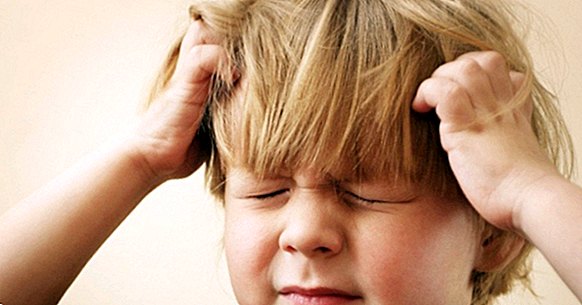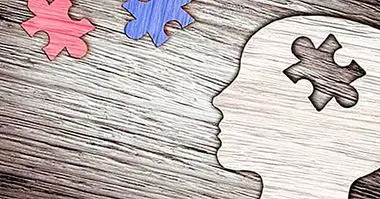Dermatilomania (excoriation disorder): symptoms and causes
The excoriation disorder , also known as dermatilomania, involves scratching and tearing parts of the skin, usually because of intense feelings of anxiety.
In this article we will describe the symptoms, causes and treatment of dermatilomania ; in relation to this last aspect we will focus on the habit inversion technique.
- Maybe you're interested: "The 16 most common mental disorders"
What is dermatilomania?
Dermatilomania is a psychological disorder characterized by a intense and frequent urge to pinch, scratch or tear off parts of one's own skin . The DSM-5 introduces it under the nomenclature "Disorder by excoriation" within the category of obsessive-compulsive disorder and other related, which is also the trichotillomania.
According to this diagnostic manual, the disorder by excoriation is defined as the habit of scratching the skin in a compulsive and repetitive way until causing injuries. These can be considerable and there is a significant risk that infections will occur in the damaged regions.
Despite the fact that most experts point the closeness between dermatilomania and obsessive-compulsive disorders , Odlaug and Grant (2010) state that it is more similar to addictions because the act of pinching or scratching the skin involves pleasurable emotions. In contrast, in compulsive disorders, rituals have the objective of reducing anxiety.
This disorder was first described in 1875 by Erasmus Wilson, who referred to it as "neurotic excoriations." Shortly thereafter, in 1898, Louis-Anne-Jean Brocq described several similar cases in adolescent girls with acne. Despite the multiple references in the literature, until the DSM-5 the dermatilomanía had not been officially recognized .
- Related article: "Obsessive-Compulsive Disorder (OCD): what is it and how does it manifest?"
Symptoms and main signs
The scientific literature reveals that feelings of anxiety and emotional tension trigger episodes of dermatilomania. These usually target a part of the skin in which the person perceives some type of imperfection, such as a pimple or peeling.
The face is the most common target of the injuries, although they also frequently occur on the back, chest, scalp or limbs, especially on the nails and on the tips of the fingers. Usually excoriations are performed with the fingers , although sometimes the mouth or instruments are used as needles.
These episodes can occur repeatedly during daily life, but it is also possible that only one is given per day with a very high duration and intensity. In general, people with dermatilomania focus on only one part of the body, except when it is severely damaged.
Dermatilomania can cause serious alterations in the skin, mainly damage to affected tissues, appearance of pustules and infections that sometimes even reach the blood (septicemia). The excoriation can also leave scars or disfigure the skin, which increases the strong feelings of shame and guilt of people with dermatilomania.
Causes of this disorder
The motivations for episodes of dermatilomania vary depending on the person. However, a widely accepted hypothesis is that physiological activation, and in particular that which derives from psychosocial stress , triggers excoriation behaviors, which have anxiolytic functionality.
While in obsessive-compulsive profiles dermatilomania is usually associated with the perception of skin contamination, in others closer to body dysmorphic disorder the purpose of these behaviors has to do with the attempt to eliminate physical imperfections.
A relationship has been found between dermatilomania and increase in dopamine levels, involved in motor control , in the brain reward system and in the development of addictions. The excessive presence of this neurotransmitter, which happens when consuming substances such as cocaine, seems to promote excoriation.
On the other hand, it has been proposed that this disorder could have its biological basis in the frontostriated motor circuit, which connects the frontal lobe regions on which cognitive functions depend on the basal ganglia, fundamental for automatic movements.
- Related article: "Dopamine: 7 essential functions of this neurotransmitter"
Psychological treatment: reversal of habit
As with other disorders related to physical and motor habits, including tics, onychophagia, trichotillomania, stuttering or temporomandibular syndrome, dermatilomania can be managed through the habit reversal technique of Azrin and Nunn (1973), which is part of cognitive-behavioral therapy.
This procedure consists of several steps. In the first place, a training is carried out to promote the detection of the excoriation behaviors, which in many cases are automatic, as well as the stimuli that precede them, mainly the sensations of emotional tension.
Then a response that is incompatible with the negative habit is practiced to execute it when the impulse of, in this case, scratching the skin appears; this new behavior must become a habit that replaces excoriation. An example could be to close the fists to prevent the fingers from touching the body.
The rest of the components of the Azrin and Nunn program consist in applying contingent reinforcement to the absence of excoriation (management of contingencies), teaching relaxation techniques to the client to reduce the anxiety that triggers the episodes, and finally systematically generalize the skills to the client. context of everyday life.
Bibliographic references:
- Azrin, N. H. & Nunn, R. G. (1973). Habit-reversal: a method of eliminating nervous habits and tics. Behavior Research and Therapy, 11 (4): 619-28.
- Dell'Osso, B., Altamura, A.C., Allen, A., Marazziti, D. & Hollander, E. (2006). Epidemiologic and clinical updates on impulse control disorders: a critical review. European Archives of Psychiatry and Clinical Neurosciences, 256 (8): 464-75.
- Odlaug, B. L. & Grant, J. E. (2010). Pathologic skin picking. American Journal of Drug and Alcohol Abuse, 36 (5): 296-303.



















